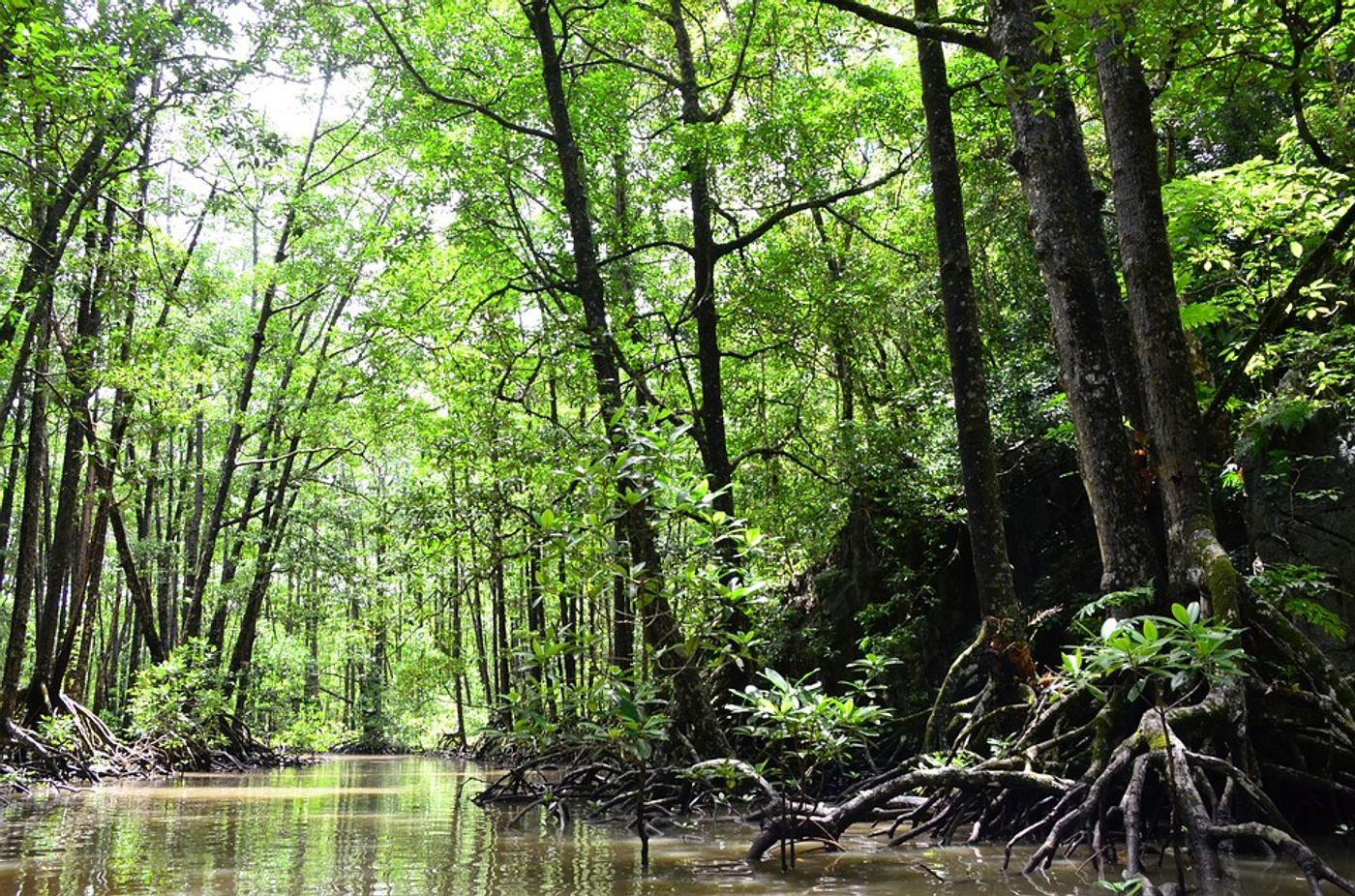The mangrove threshold with sea level rise
A new study published in the journal Science reports grim news for mangroves: until humans drastically reduce greenhouse gas emissions, mangroves won’t survive sea-level rise by 2050.
The study, led by scientists from Rutgers and Macquarie University in Australia, analyzed sediment data from the last 10,000 years to evaluate mangrove survival under various climate scenarios. The researchers looked at 78 locations and determined that if sea-level rise goes over 6 mm per year, mangroves will not be able to keep up.
"Under high-emissions scenarios, rates of sea-level rise on many tropical coastlines will exceed 7 millimeters per year, the rate at which we concluded there's a 6.2 percent probability mangroves can sustain growth," said co-author Erica Ashe, from the Department of Earth and Planetary Sciences in the School of Arts and Sciences at Rutgers University-New Brunswick. "The loss of these mangrove ecosystems could result in increased carbon dioxide in the atmosphere and fewer vital buffers against storm surges in the long run."
The scientists say that only when sea-level rise stays below 5 mm per year (which could be the case for a low-emissions scenario), would mangroves be more likely to survive. As they note in their paper, “the rate of sea-level rise has doubled from 1.8 millimeters per year over the 20th century to ∼3.4 millimeters per year in recent years.”
Mangroves provide crucial ecosystem services to habitats and industries around the world, including stabilizing coastlines, reducing erosion from storm surges, currents, waves and tides, and acting as nurseries and shelter for fishes and other organisms. There are roughly 80 species of mangrove trees growing in tropical and subtropical areas worldwide.
While there is the potential for mangroves forests to grow inland, coastal developments along many coastlines make it difficult for forests to adapt. Science Daily reports, “The findings stress the importance of mitigating the magnitude of rapid sea-level rise and ensuring that coastal adaptation measures allow mangroves to expand across coastal lowlands.”
Sources: Science, Science Daily









